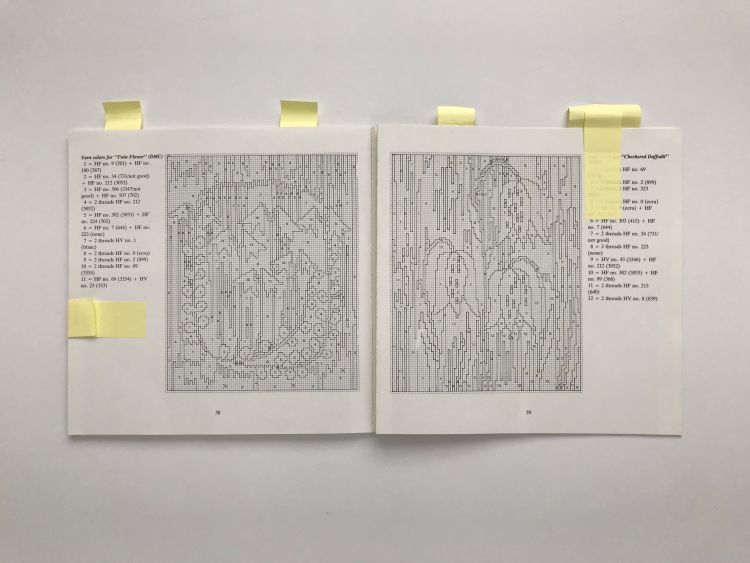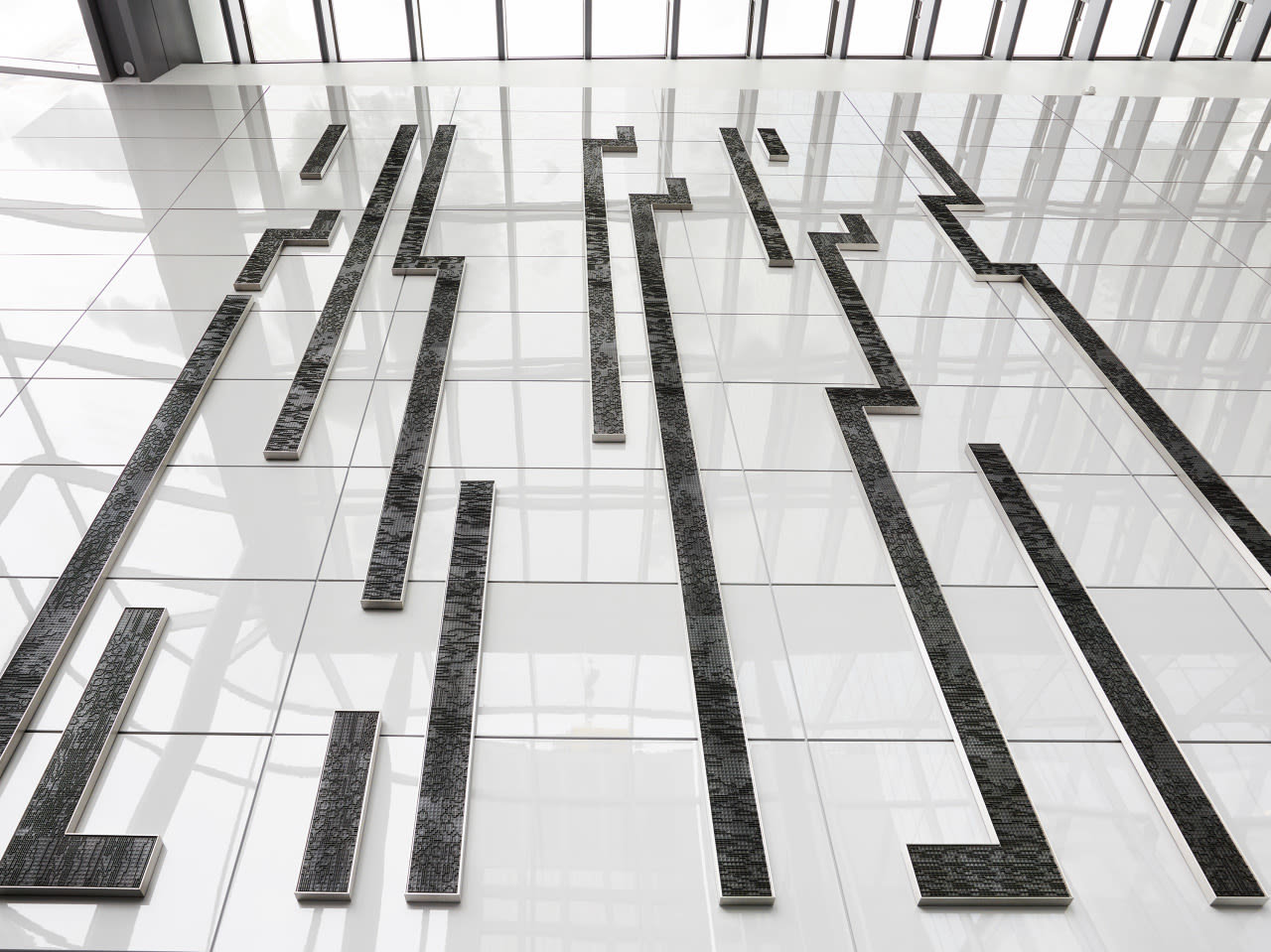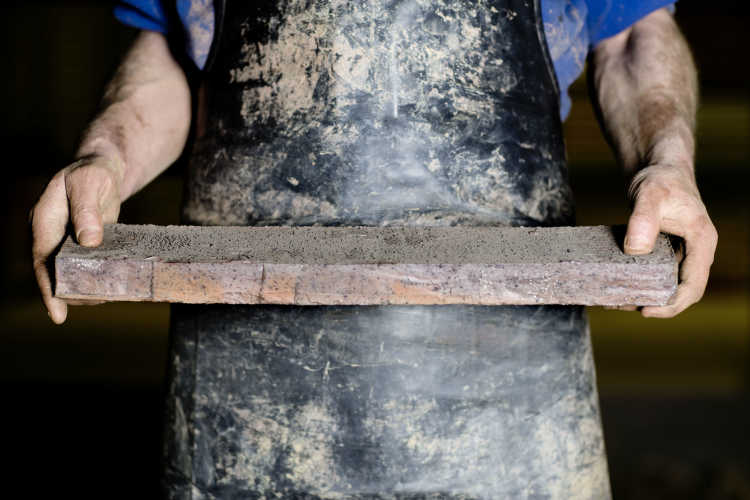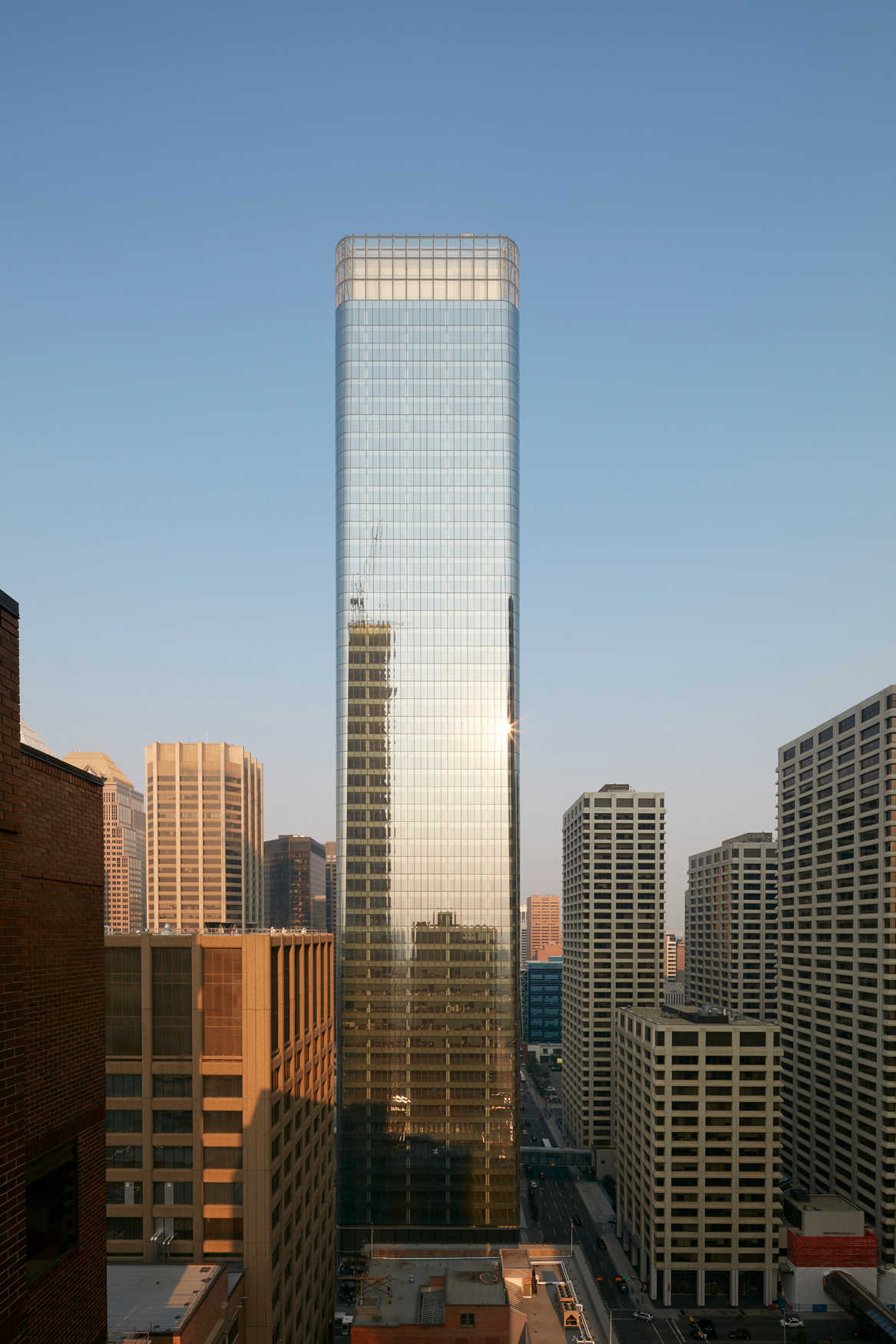A dialogue between art and architecture: The story behind the public art at Brookfield Place Calgary
Brookfield Place, Calgary is a substantial commercial project for the city, enveloped by a generous new public plaza and wintergardens, and designed with cavernous beautifully crafted interior spaces. But behind this building there is a hidden dialogue and ongoing cultural conversation between art and architecture, both in and around the building, and between its public and private spaces.
Born of Calgary
Brookfield Place is a symbol of modern, urban Calgary, but it is also inspired and shaped by Calgary's dramatic natural landscape, making the most of the magnificent omnipresent Rockies which are the backdrop to the city, and the crystal clear sunlight that refracts through the peaks from glacial mountain lakes, bathing the city. With extensive public spaces and wintergardens to fill, major pieces of integrated art were commissioned for Brookfield Place by the client, Brookfield Canada, as part of their ongoing cultural programme. The pieces are integrated within Brookfield Place, and like the building, they share the same narrative of being 'borne of Calgary' and explore the ongoing connections between nature and the city, as they weave through and between Brookfield Place and its public spaces.
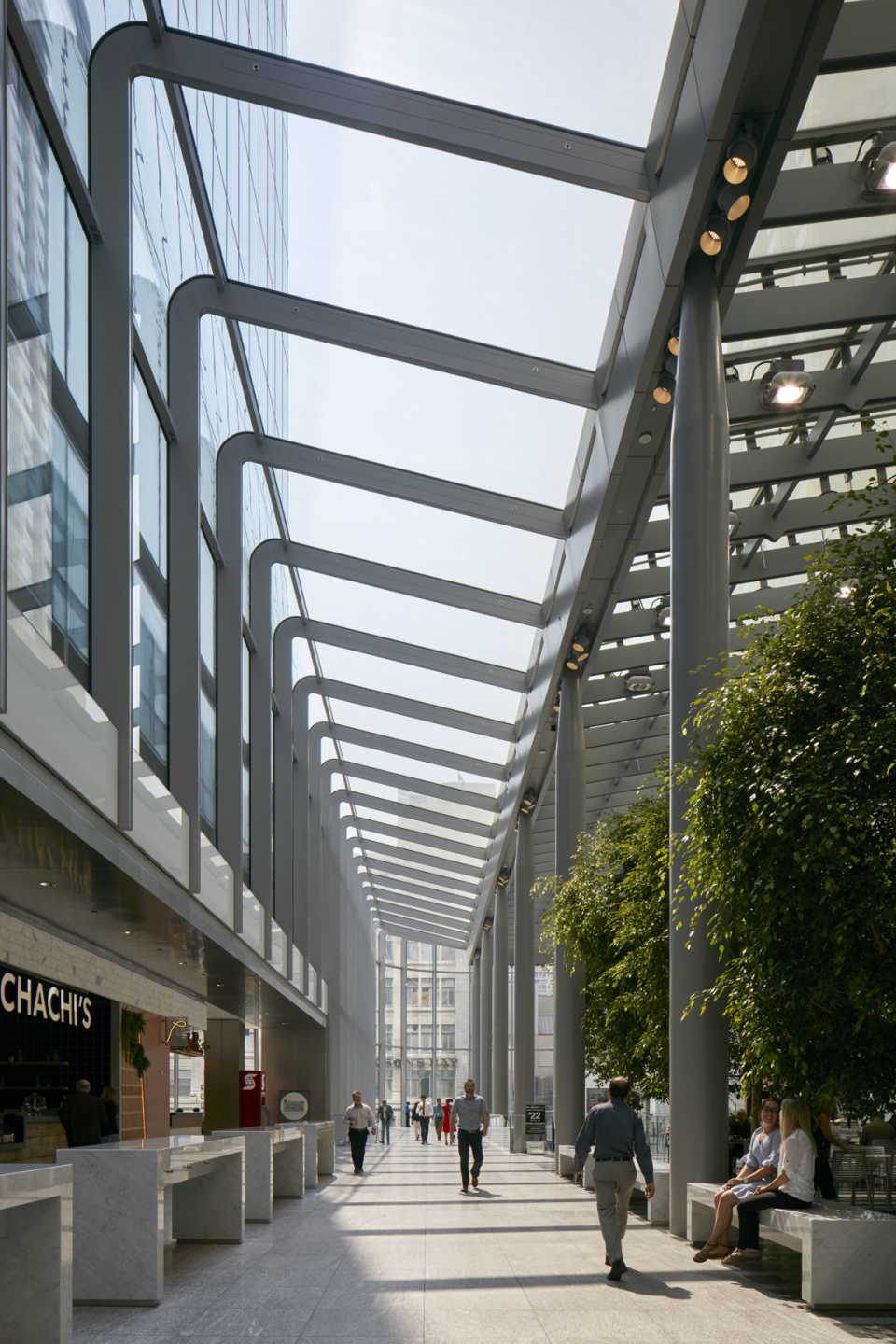
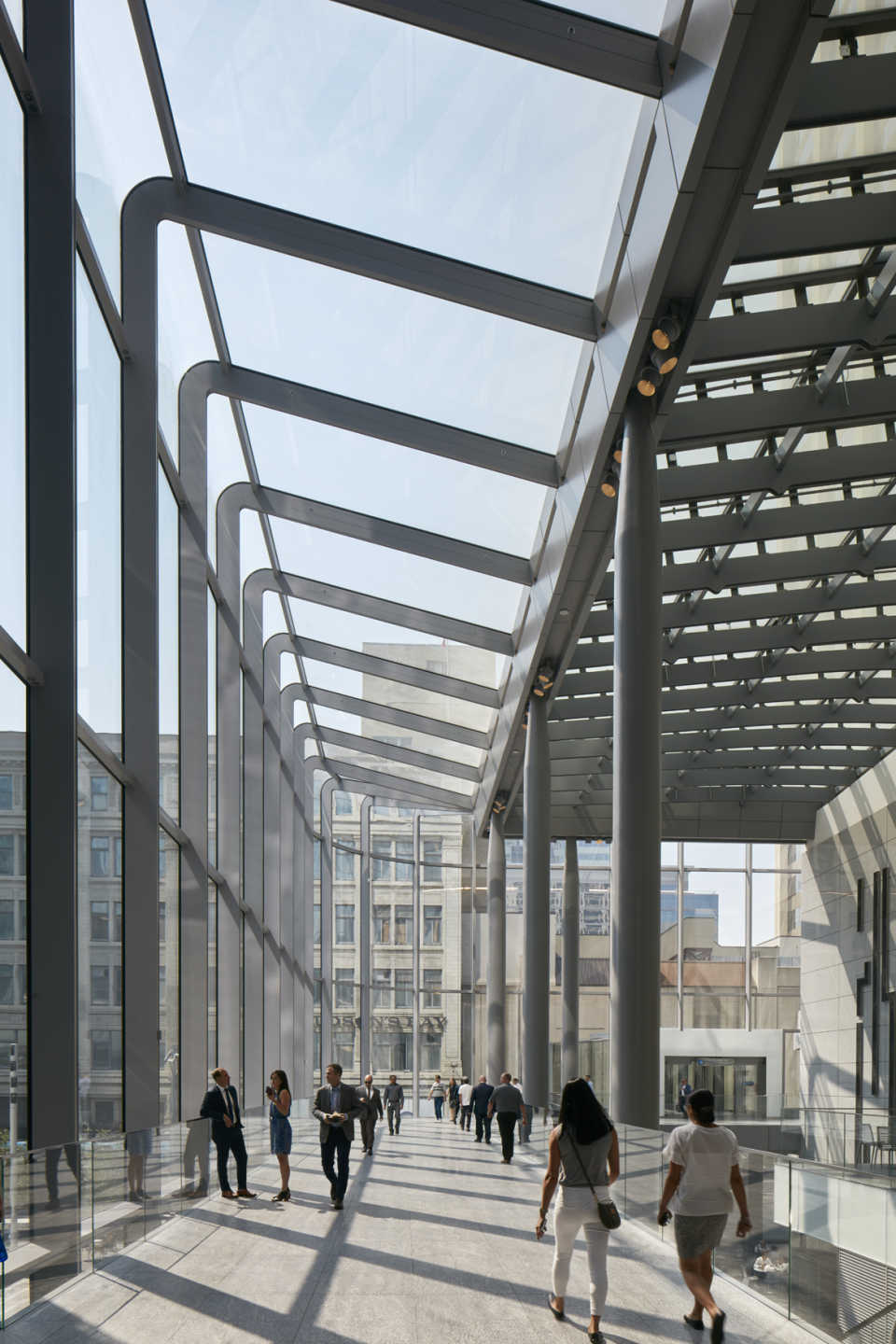
Herald/Harbinger by Ben Rubin and Jer Thorp
Herald/Harbinger is one of two major pieces of art commissioned specifically for
Brookfield Place Calgary. Created by artists Ben Rubin and Jer Thorp, the immersive data and soundscape piece is a real-time response to the evolution of Calgary's natural landscape, and in particular the shrinking of the once-mighty Bow Glacier. Today, the glacier comprises some 750 metres of ice, which is part of the Wapta Icefield, 220 kilometers northwest of Calgary in Banff National Park. Bow Glacier is the last stub of a great mass of ice, which at its peak measured more than a kilometre in depth, and once flowed far to the east, carving out a river valley of the same name. The Glacier is dying. Over the last century, Bow Glacier has retreated more than 1000 metres, sitting over three kilometres away from Bow Lake, (affectionately known as Bow Pond) a meltwater lake formed on a small rocky shelf, that is a distinctive turquoise in colour owning to the tiny particles of glacial till.


To create the piece, the artists were flown by helicopter to the Bow Glacier, landing a few metres from a rocky outcropping one summer. The artists then built a seismic observatory over three days, along the edge of the ice to observe the shifting movements of the glacier underneath the ice. The data collected by the station is relayed four kilometres via radio bridge to the Num-Ti-Jah lodge at the edge of Bow Lake, then uploaded via satellite before being broadcast from a set of sixteen speakers, filling the plaza in front of Brookfield Place. This ancient soundscape is just audible above the hum of the city, creating a beautiful dialogue between the glacier and Calgary, as the burbling, cracking sounds of the ice merging with the sounds of a passing commuter train or the steps of commuters on the pavement.


Herald/Harbinger also includes an immersive light installation comprising a set of seven tall LED displays which represent the same data extracted from the observatory, and displays it as distortions in a field of light on each panel. At night, the light dances across the stone of the public plaza underneath, which is itself integrates over 7000 unique pieces of granite, cut to depict to the geological forces of the glacier’s ice field. In the long Calgary winters this sound and light display is often muted by freshly fallen snow, creating a fulcrum of simultaneity between a 60 million year old mountain range and 21st century downtown Calgary.
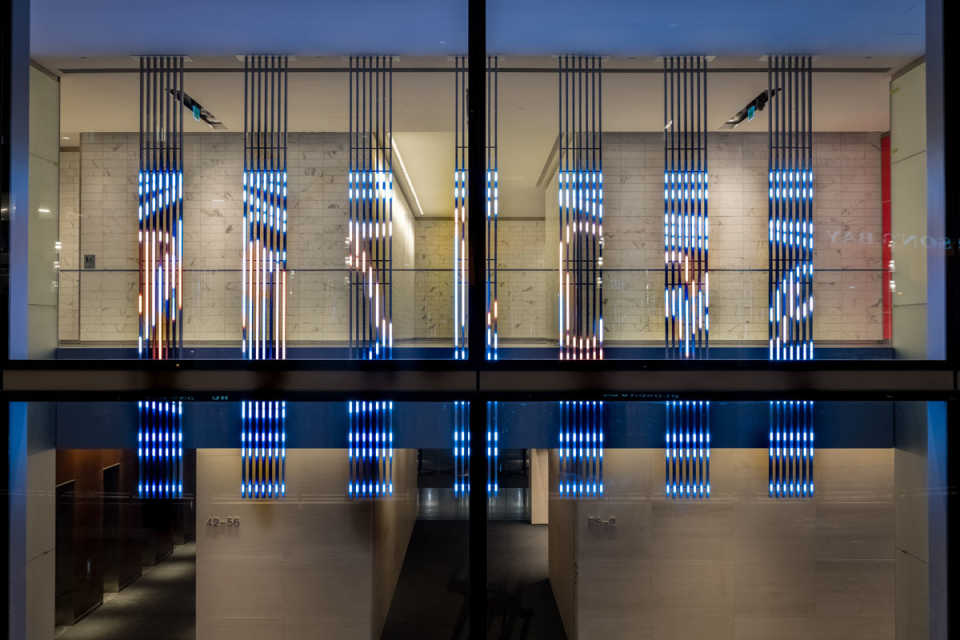

In fifty years or so, the Bow Glacier will have receded to the level of the seismic station recording the data of its demise. The signal from the mountain will begin to fade and eventually go silent, and the plaza will be inhabited only by the footsteps and the thrum of vehicles. But for now, the artwork speaks to the central role that the Rockies play in the life of all Calgary residents. According to artist Jer Thorp, there is a strong likelihood that if you drink a glass of water here you are tasting some of the glacier, and that the bones of lifelong Calgary residents are infused with the blue limestone molecules of the mountains.
‘The Forest’ and ‘The Trees’, by Micah Lexier
‘The Forest and The Trees’ by Canadian artist Micah Lexier, whose work combines conceptual art with sculpture and often uses precise industrial processes. ‘The Forest and The Trees’is a two part artwork which explores our ongoing connection with nature, despite our urbanisation.
The artist's source material was a second-hand book of mid-century cross stitch patterns, which were digitised, cropped and rotated to create an elaborate grid of repeating designs. When seen together, the patterns blend into a vast tapestry reminiscent of abstractions of circuit boards, mechanics and precision engineering, while also recalling the contrasting organic nature of local flora and fauna and Calgary’s rugged natural landscape, mountain and glacial lakes.
A 3D printed template of the abstracted cross stitch patterns was made which was used to create the pattern for the 1200 low relief sculptural tiles that comprise the piece. The tiles were first cast in aluminium before being painted black. The final step was to coat the tiles with bronze, to create a light-responsive surface and a shifting play of metallic hues as the daylight moves across its surface. Each tile was mounted to a frame by hand, create the effect of an industrial ‘quilt'.
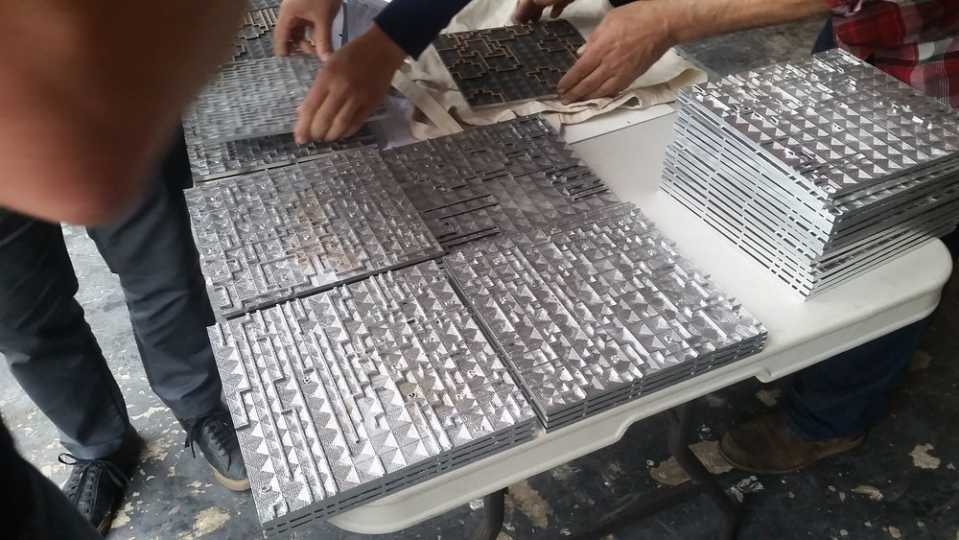
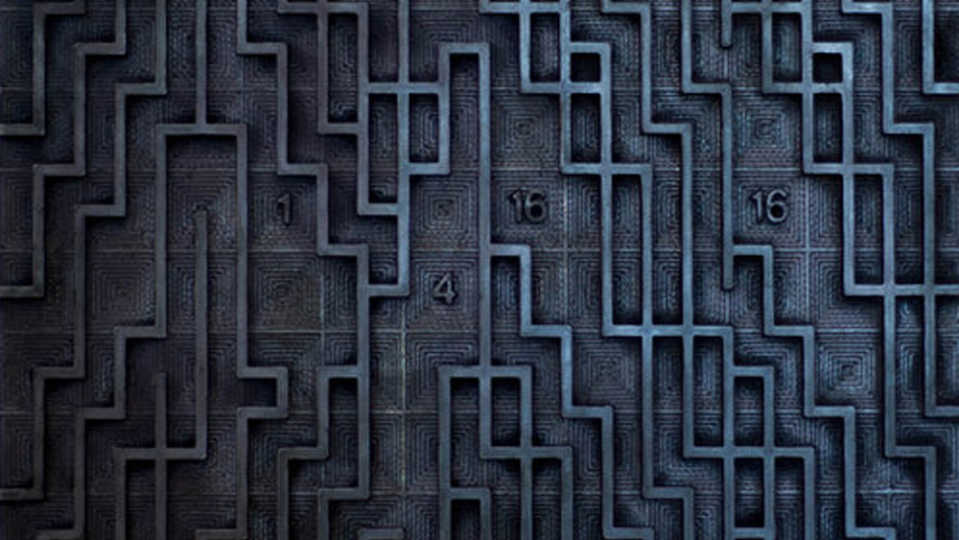

‘The Forest and The Trees’ is joined by a companion piece, 'The Trees' which hangs in the James K. Gray Galleria on the south side of Brookfield Place. It takes one individual tile from 'The Forest' and blows it up to create a piece exploring scale, detail and perception.
Together, Lexier's pieces are a testament to the industrial and artistic processes and craft, culminating in an artwork that recalls nature, human endeavour and technology.

